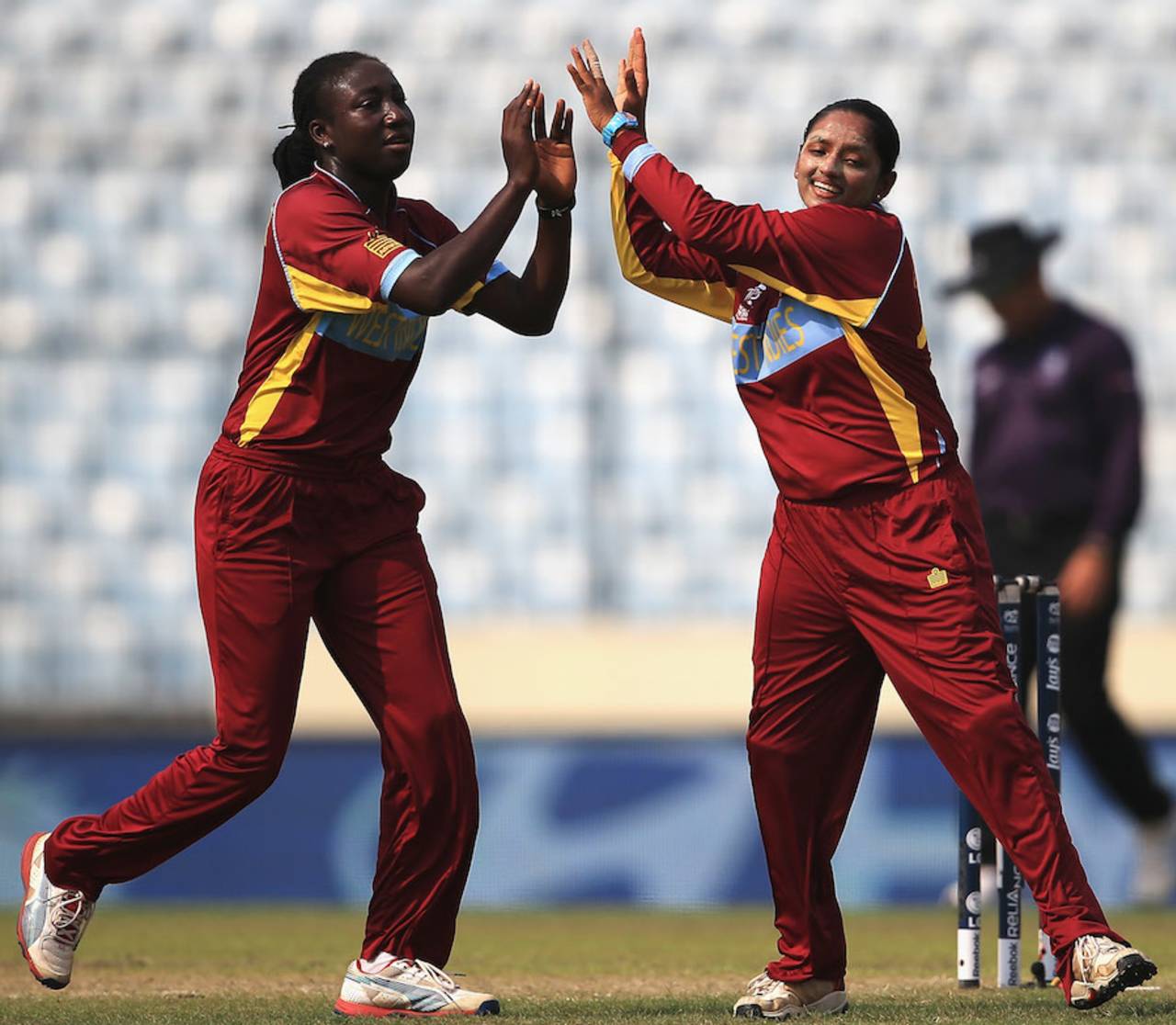All hail the other West Indies
The women's side's understated rise to No. 1 could inspire young girls - and boys - and break barriers to gender equality in the region
Roger Sawh
28-Sep-2014

Stable management and consistent selection have contributed to the rise of the women's team • ICC
As I compile these thoughts, West Indies are ranked No. 1 in the world. Yes, in cricket. Yes, by the ICC.
Over the past few years, the West Indies team has rapidly ascended the rankings, beating the likes of New Zealand, South Africa, Sri Lanka and Pakistan, and competing fiercely with England and Australia for global supremacy. The team has terrific allrounders, powerful hitters, mesmerising spinners, penetrative quicks, and a shrewd captain.
If you are confused, let me clarify: I am not misinformed or blissfully ignorant of the current state of Denesh Ramdin's, Dwayne Bravo's or Darren Sammy's team. The West Indies team is on top of the women's cricket world.
The climb of Merissa Aguilleira 's bunch, though, has been neither easy nor glamorous. For a multitude of reasons, the women's form of the "gentleman's game" has not historically enjoyed the level of attention and adulation that the men's version has had. Maybe it's misogyny, maybe it's inadequate exposure, maybe it's the lack of towering sixes and broken stumps - regardless, women's cricket has been deprived of attention.
In the West Indies, female fans of the game have tended to be among the most ardent and informed. Many wear their hearts on their sleeves when watching a match, and have a fondness for supporting success. It was always somewhat surprising, therefore, that such zeal did not translate into a more thriving women's cricket scene in the Caribbean; a cursory search of West Indies women's cricket history reveals that, prior to 2008, there was very little international cricket played by the ladies in maroon.
Just as the three Ws, Sobers, Kanhai and others helped lift the profile of a few "little" West Indian nations many years ago, it feels like our present women's crop are carving out their own legendary stories
The women's team wallowed with the likes of Associate-level nations, and stakeholders in West Indies cricket did not seem to care very much about their absence of success, while the men's team went about leaving a glorious legacy.
Cricket, though, is an ever-evolving game. It has been blooming globally, with T20 providing the most potent fuel for growing popularity in new parts of the world. As new and diverse fans have come on board, women's cricket has enjoyed an emergence of sorts. The powers that be in West Indies cricket saw the need to be progressive in developing the women's side to a world-class level.
Under a stable management structure, a wind of change has blown in. Consistent selection, infused with the fast-tracking of talented young players has seen the West Indies women's team steadily grow and develop. Various achievements have punctuated a growth plan for the side, and an obvious ethos of unity and commitment under coach Sherwin Campbell is evident to onlookers. The results, particularly recently, have been undeniable: the West Indies women's team now enjoys a spot atop the world rankings after beating New Zealand in all games so far in the home series in the Caribbean.
This achievement is one for the region to recognise and savour. West Indies cricket in general has not been at its strongest over the last couple of decades, and the women's team deserves all credit for flying the region's flag high once again. Moreover, when one considers how relatively short a time it has been from 2008 to now for such a meteoric rise, the team deserves even greater praise for swift and considerable growth. It speaks to the power of a concerted and well-organised plan for development, as well as the merits of nurturing a team's skills and collective ethic to, ultimately, yield results.
There is another significance to this feat as well: from a broader social viewpoint, the attainment of excellence by the region's women serves to further break down barriers to gender equality across the region. Actions, they say, speak louder than words, and the results on the field of play go towards positioning West Indies women as world-class.
Stafanie Taylor, a classy Jamaican right-hander, is a particularly special example - she is the world's top-ranked allrounder, top-ranked bowler, and a top-four batter at the moment, and she is only 23. It is truly exciting to think of how many young people, boys and girls alike, will be inspired by the women's team to play cricket and, hopefully, emulate the team's accomplishments. They too will want to be among the world's best in both batting and bowling. They too will want to be a part of a team that is regarded as the best. Most importantly, they too will believe that they can do it.
Just as the three Ws, Sobers, Kanhai and others helped lift the profile of a few "little" West Indian nations many years ago, it feels like the present women's crop of Taylor, Aguilleira, Deandra Dottin, Tremayne Smartt, Anisa Mohamed and their compatriots are carving out their own legendary stories.
The signs are encouraging, the results are undeniable, and the potential is clear - it may well be the case that this team will be looked at in the future as groundbreakers who opened the floodgates to prolonged Caribbean success. Whatever the outcome, one thing is certain - the Caribbean is proud of their women's team.
Roger Sawh is a law student in Canada. He writes at www.sawhoncricket.com. @sawhoncricket